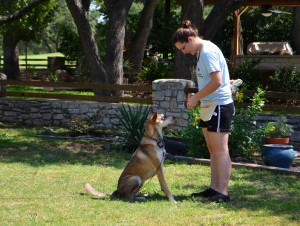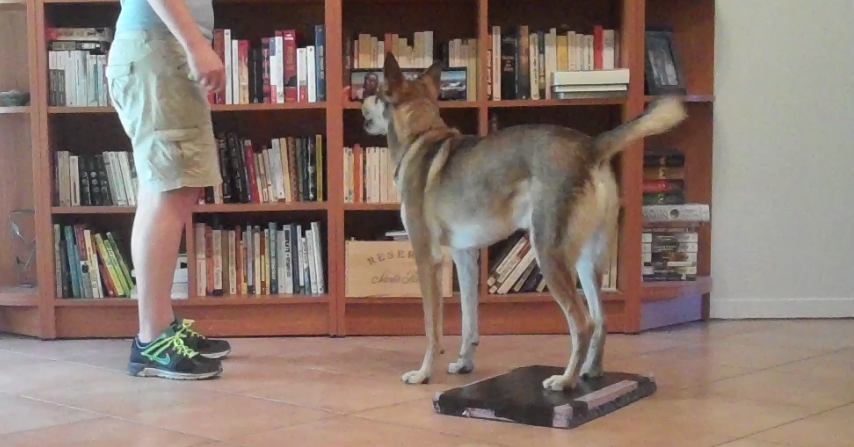 I’ve caught myself talking to my dogs to encourage them to keep going. Usually, I try to remain silent to let them focus, but sometimes I’ll talk to try to get them to keep going. When I saw this pop up in a recent conversation, I realized it might be a good topic to discuss on the blog.
I’ve caught myself talking to my dogs to encourage them to keep going. Usually, I try to remain silent to let them focus, but sometimes I’ll talk to try to get them to keep going. When I saw this pop up in a recent conversation, I realized it might be a good topic to discuss on the blog.
After reflecting for a minute, I realized that given the proper motivation and the proper criteria, no dog should need verbal encouragement to keep trying. In my training, I tend to raise criteria too high too fast because I’m impatient and my dogs have reinforced me for doing so because they usually figure it out anyways. BUT, that’s not fair to them and I know I can do better!
Below are a couple of videos I took of two training sessions with Loker where the goal is to teach him how to target the object with his back legs then his back left leg. I’ve never worked on asking him to target with his back feet, but he is familiar with targeting and platforms. Here are the (general) steps I was looking for:
- Approach the target.
- Put back feet near target.
- Put back foot on target.
- Put just back feet on target.
- Put back left foot on target.
- Hold back left foot on target.
There are two videos. One video where I used verbal encouragement to keep him going (Video 1), and one where I was silent, but lowered criteria as well as used better food (Video 2). Take a look:
Video 1
Video 2
In Video 1, I use a small target with lower value food (the lowest he will work for) in a non-distracting environment. He actually works pretty hard for it, but you can see a lot of frustration. When he lies down, I know he’s confused/taking a breather. He does a lot of displacement sniffing which is his “go-to” calming signal (stress signal). His rate of reinforcement (the number of treats per minute) is very low because I have not set him up to succeed as well as I should or could.
In Video 2, I use a larger platform (easier to target) with high value food (something he would work for outside in distractions actually). We have already worked with this platform so he immediately got on top of it and I was able to mark and reward right from the start. I set him up to be successful. I may have raised the criteria slightly too much in the end, but over all he was receiving more feedback than in Video 1.
To conclude, I’d like to say that if you find yourself verbally encouraging your dog to keep trying, you’re probably asking for too much or not providing the right motivation. Having the ability to break things down into tiny steps will help your training progress more accurately and effectively. If you get stuck, I highly encourage you to take a video and watch it yourself and, if you’re brave enough, share it online for your dog friends to observe and provide you feedback. Video is a wonderful tool to use when you get stuck and having fresh eyes look at the situation is priceless!
